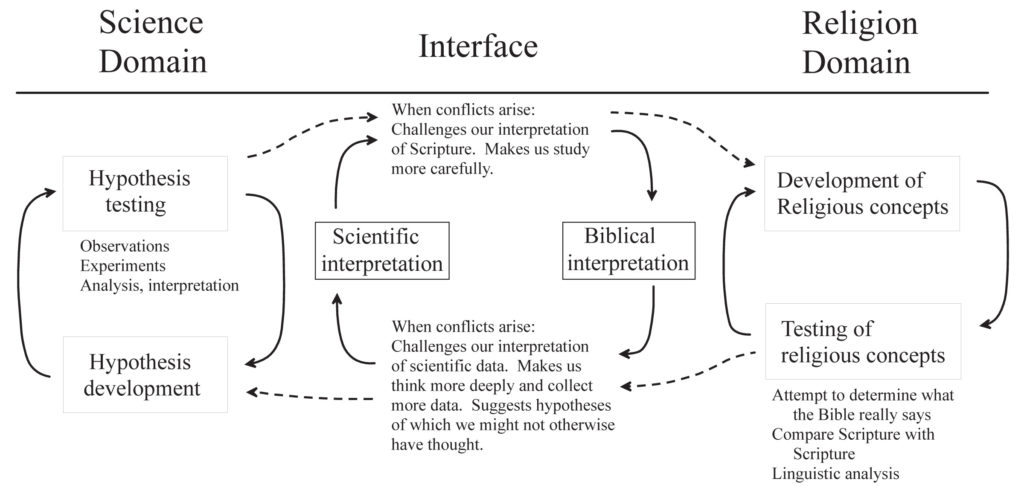
How does creation research look different?
If you were to look into the lab of a creation scientist and then into the lab of a conventional scientist, you likely wouldn’t be able to tell the two apart. They are both performing experiments, testing hypotheses, and recording their data. If the two are being cautious in their testing and honestly reporting their findings, both can be “good” scientists. Neither one or the other is inherently a “bad” scientist based on what they believe.
In the collection of data, creation research looks the same as any other research. However, the types of questions asked and the type of data sought will often differ from mainstream science.
Everyone has a worldview
All scientists have a worldview, a framework, from which they work. Young-earth (YE) creationists hold that Scripture is the highest authority and from it we can seek to understand the world around us. Conversely, scientists who hold to materialistic naturalism (MN) believe that the world came about by entirely natural processes and as such, there is no divine entity which has influence over the universe.
YE creationists, then, use Scripture as a foundation for all that they do, including science.
Science and Scripture can both be studied, and they don’t need to be mutually exclusive. From science, we can learn more about the intricacies of creation, such as how photosynthesis works and when will eclipses occur. From Scripture, we learn about why creation even exists and Who made it. When the Bible speaks on a topic about the world, such as the age of the universe, we must base our science on it. In areas where Scripture is silent, however, we must come up with hypotheses (that do not conflict with God’s Word) that can explain those natural phenomena.
The relationship between science and faith
The diagram below illustrates how we can interact with the domains of both science and faith.

Under the “religion” domain we find theological concepts; we notice something within the Bible and compare Scripture with Scripture. We can study the original Hebrew, Greek, or Aramaic and do linguistic studies. We can discuss the Massoretic text vs. the LXX and what the implications are for our modern translations.
Under the “science” domain we look to the applied sciences: chemistry, physics, etc. We can observe a reaction taking place, document it, come up with a hypothesis, and then test it. Similarly, in the medical field we can make observations about the human body and come up with solutions to heal diseases and treat afflictions.
The middle part comes into play when we examine the historical aspects of science in fields such as geology, evolutionary biology, and even astronomy. No longer can we rely on purely observable processes; we cannot recreate the past. We can attempt to come up with possible scenarios and run experiments in simulated environments, but we cannot know with certainty if our conclusions are accurate. This is where we must interact with the “interface” linking science and faith.
Our worldview regarding origins will greatly influence how we do our science and what sort of questions we are seeking to answer. As a YE creationist, we acknowledge that we bring in presuppositions about the age of the earth. Because we believe that the universe was created only a few thousand years ago, we must come up with ideas and models that reflect and support that paradigm.
However, in areas where Scripture is silent, we interact primarily in the scientific realm in an attempt to build a consistent model. We are constantly testing out hypotheses and reshaping them as we get more data.
What happens if there appears to be a conflict between science and Scripture?
If we come across a supposed conflict between science and Scripture, we must work within the interface. We need to first go to the Bible, as it is the infallible Word of God and we can trust it, and look to see if our interpretation is correct. Careful study of the text is necessary to ensure that we are not misunderstanding the intent of the passage.
Then, we should look to science, and ask ourselves if we have a flawed interpretation of the data. We should carefully look at our findings and make sure our data collection was carefully done and honestly reported. Then, if there is still a conflict, we might need to propose new hypotheses or even a whole new model; one that does not contradict Scripture.




